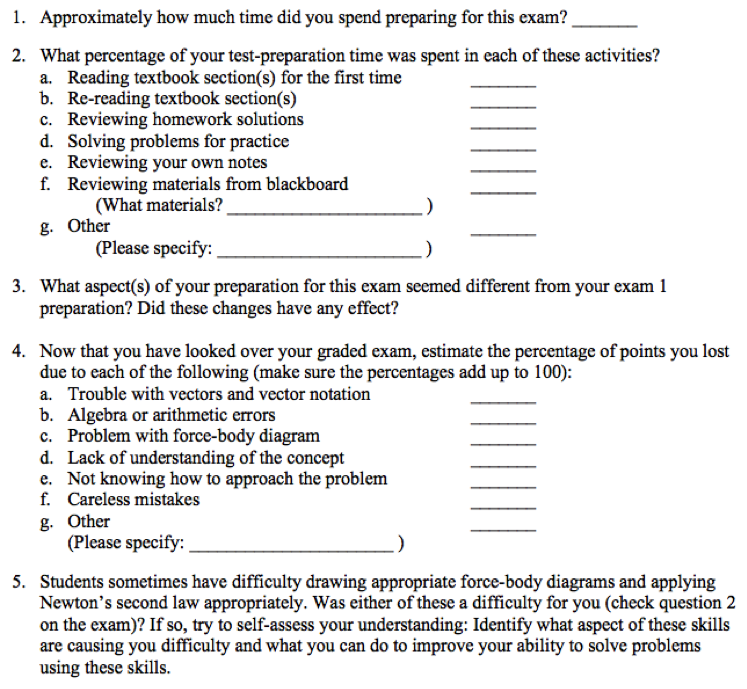“The illiterate of the 21st century will not be those who cannot read and write, but those who cannot learn, unlearn and relearn”1
The Issue
When we think about what we teach our students, the first thing that comes to mind is knowledge; the curriculum and standards are full of concepts students should learn and understand. As we think about it further, we realize it’s important that their knowledge does not remain inert: students should be able to apply what they know through skills like critical thinking, creativity, communication, and collaboration. We also realize that our students should embody certain character qualities in how they engage with the world: grit, perseverance, mindfulness, etc.
We may think that sounds like a complete, multi-dimensional education.
But there is one more dimension we are missing: the “meta” dimension. “Meta” is a term that means “referring to itself”. In other words, students must learn how to learn. They must be reflective about their growth. They must learn to set goals, select strategies, and evaluate their progress. They must internalize a growth mindset, believing effort matters and approaching challenges with excitement.
The Research
Metacognition (the process of thinking about thinking) has been shown to enhance learning,2 and to transfer across disciplines.3 To illustrate how this works on the level of student behavior, we can look to mathematics education research.
In one study, students were compared to seasoned mathematicians. The students consistently selected a seemingly useful strategy and continued to apply it without checking to see if it was actually working. They wasted a significant amount of time on fruitless pursuits. The more experienced mathematicians on the other hand, exercised metacognition, monitoring their approach all along the way to see if it was actually leading to a solution or a dead end. Rather than just using what they had learned, they thought about how they were using what they had learned – and that made a huge difference.
Of course, with such an abstract learning goal, it is important for us to be precise with how to teach it. Traditional methods of improving students’ learning strategies often focus on prescribed procedures such as note-taking, self-testing, and scheduling. These typically result in initial motivation and some short-term improvement, but ultimately a reversion to old habits.4 While these tactics may work in the short term (e.g. to cram for an exam), they don’t actually result in a deep, lasting change.
In The Classroom – Generally
There are four general aspects to teaching metacognition:
1. Promoting general awareness of the importance of metacognition
2. Improving awareness of cognition through modeling
3. Improving regulation and applications of cognition
4. Fostering environments that promote meta-learning.
First of all, it is important to explicitly talk about metacognition. Since the challenge is to teach students to consciously monitor and regulate their cognition, they should first consciously think about it, and choose to set it as a goal. We can remind students that learning isn’t something that just happens, and it doesn’t happen the same way for all of us all of the time. By watching how we’re learning, making note of our struggles, strengths, and patterns, we can actually become better learners. If a student fails at a math problem, for example, it may be valuable to talk about how thinking processes, attitudes, motivation, and context may have played a role in how they chose their method of solving the problem; not just the correct but mechanical application of a mathematical procedure.
Next, although metacognition is largely a student-centric practice, teachers play an important role in fostering it by modeling appropriate metacognitive practices explicitly as they teach, so that students can follow the thought process of an expert, and eventually internalize it for themselves. That means saying how you’re thinking about your own thinking, and reminding students why that’s important. As you’re teaching a class on grammar, for example, you might start a dialogue about how you put the lesson together: “Why do you think I decided to teach it this way?” Students can also model good metacognitive practices for each other. This can sometimes be even more effective, as students are often closer to peers’ levels of metacognitive development.
Third, it is important to move beyond simple “awareness,” to regulation and application. You can imagine being aware you are procrastinating, or not studying in the most efficient way, and yet not taking action in accordance with your awareness. This step seems like a given, and yet it is important to highlight it separately, because it is often the biggest roadblock to improvement. Mapping out a plan to make improvements based on self-awareness can be a challenging and cognitively demanding undertaking. By carving out classroom time dedicated to developing these skills, we send the message that it’s normal for these changes to not happen automatically. They take dedicated thought, practice, and reflection. Students can work alone or in groups to reflect on common obstacles like procrastination or test anxiety, and how they’ve been working to overcome them. This shows students that strategies are possible, they take time to find, and ultimately, they’re worth it.
Finally, as described above, it is important to foster a classroom climate that promotes a view of intelligence as malleable with hard work (a growth mindset) and the goal of learning as mastery, (rather than performance). This way, students can focus on internalizing skills and competencies rather than achieving a high but short-term, superficial and non-transferable level of performance. This means talking about these things. It might sound like a lot of talking, but if we can spend a semester teaching biology, we can interweave conversations about how to learn biology, too.
You might be thinking something along the lines of: “This may be hard to grasp for many students. Sure, I can introduce it to the students who are already excelling, but those who are struggling already have so much on their plates!” Metacognition can always be developed in students in the context of their current goals and can enhance their learning5 as well as transfer of learning,6 no matter their starting achievement level. In fact, it may be most useful for lower-achieving students, as the higher-achieving students are most likely already employing strategies that have proven successful for them.7
Research has shown that for learning disabled and low achieving students, metacognitive training can improve behavior more effectively than traditional attention control training.8 It has even been shown to increase academic self-confidence of non-Caucasian students in the STEM disciplines,9 counteracting the effects of stereotype threat.
Action Items
When students get back an exam, how often do they glance at the grade, and never look at it again? Exams can be very useful teaching tools. Many teachers offer students incentives for correcting their mistakes, hoping this will encourage them to fill in their gaps. Going one step further, Marsha C. Lovett at Carnegie Mellon has developed “exam wrappers” to scaffold students in digging deeply into their meta-cognitive process, reflect on their strengths and weaknesses, and adapt their strategies. These wrappers are basically tools for reflecting on and enhancing learning post-exam, reminding students that the grade is not the end goal. Below is an example wrapper from a physics test.
Exam wrappers help students to spend time thinking carefully about their strategies, and learn from understanding their performance on a test. Of course, this doesn’t have to apply only to exams. Wrappers can be developed for and activity, including homework assignments, in-class exercises, projects, and so on. For some more examples, check out the Eberly Center website.
Metacognitive scaffolding can enhance all parts of the learning experience, not just exams. Wrappers can be designed for homework assignments, in-class exercises, projects, etc. Discussing the learning goals and rationale behind assignments before students begin assignments has been shown to help students master the content.
So What?
When we teach our students, we hope they will apply what they learn to their lives. In teaching ethics, for example, we believe that we are helping them to become more ethical people. But the evidence suggests that ethicists “are no likelier to donate to charity, to choose a vegetarian diet, to reply to student emails, to pay conference registration fees they owe, to return their library books, to vote in public elections, to stay in regular contact with their mothers, to be blood or organ donors, or to behave politely at conferences.”10
It turns out that we have been skipping a step: meta-learning is crucial for the translation of understanding into action.
Meta-learning helps within subjects, and it helps to reach outside of them. It makes us more likely to transfer what we know from one sphere of life to another, to figure out a more optimal way of achieving our goals, and to live according to our principles. And it is not only achievable in our classrooms, it can enhance learning at every stage.
To learn more, check out Maya Bialik’s new book Four-Dimensional Education. [Hint: Meta-Learning is the fourth dimension; the first three are knowledge, skills, and character].
References & Further Reading
- Psychologist Herbert Gerjuoy as quoted by Alvin Toffler, Futurist, in “Future Shock” (1970) [Book]
- Schmidt, A. M., & Ford, J. K. (2003). Learning Within a Learner Control Training Environment: the Interactive Effects of Goal Orientation and Metacognitive Instruction on Learning Outcomes. Personnel Psychology, 56(2), 405–429. [Paper]
- Ford, J. K., Smith, E. M., Weissbein, D. a., Gully, S. M., & Salas, E. (1998). Relationships of goal orientation, metacognitive activity, and practice strategies with learning outcomes and transfer. Journal of Applied Psychology, 83(2), 218–233. [Paper]
- E. Martin and P. Ramsden, “Learning Skills and Skill in Learning,” in J.T.E. Richardson, M. Eysenck, and D. Warren-Piper (Eds.), Student Learning: Research in Education and Cognitive Psychology (Guildford, Surrey: Society for Research into Higher Education and NFER-Nelson, 1986) as cited in J. Biggs, “The Role of Metacognition in Enhancing Learning,” Australian Journal of Education 32, no. 2, (1988): 127–138 [Paper]
- Schmidt, A. M., & Ford, J. K. (2003). Learning Within a Learner Control Training Environment: the Interactive Effects of Goal Orientation and Metacognitive Instruction on Learning Outcomes. Personnel Psychology, 56(2), 405–429. [Paper]
- Ford, J. K., Smith, E. M., Weissbein, D. a., Gully, S. M., & Salas, E. (1998). Relationships of goal orientation, metacognitive activity, and practice strategies with learning outcomes and transfer. Journal of Applied Psychology, 83(2), 218–233. [Paper]
- McKeachie, W. J. (1988). The need for study strategy training. In C. E. Weinstein, E. T. Goetz, & P. A. Alexander (Eds.), Learning and study strategies: Issues in assessment, instruction, and evaluation (pp. 3-9). New York: Academic Press. [Chapter]
- Larson, K. a., & Gerber, M. M. (1987). Effects of Social Metacognitive Training of Enhanced Overt Behavior in Learning Disabled and Low Achieving Delinquents. Exceptional Children. [Paper]
- Winkelmes, M (2013), “Transparency in teaching: Faculty share data and improve students’ learning” Liberal Education 99/2 (Spring 2013), 48-55. [Article] See also Illinois Initiative on Transparency in Learning and Teaching, for http://go.illinois.edu/transparentmethods
- Schwitzgebel, E. (2013). The Moral Behavior of Ethicists and the Role of the Philosopher. [Paper]




Please make contact with me when you have time. I am a second grade teacher in Lima, Ohio. I am doing research on the use of Metacognition in comprehension of reading. I am narrowing this research to students with a learning disabilitites.
This article on metacognition is insightful; I really liked the idea of exam wrappers. In my own dissertation research, I found that my participants (middle/high school teachers) made a lot of metacognition comments. Unfortunately, as this was not the original focus, I’m not sure this was clear in my results.
Pingback: The Power Of Meta-Learning For College Students - The Techs Storm